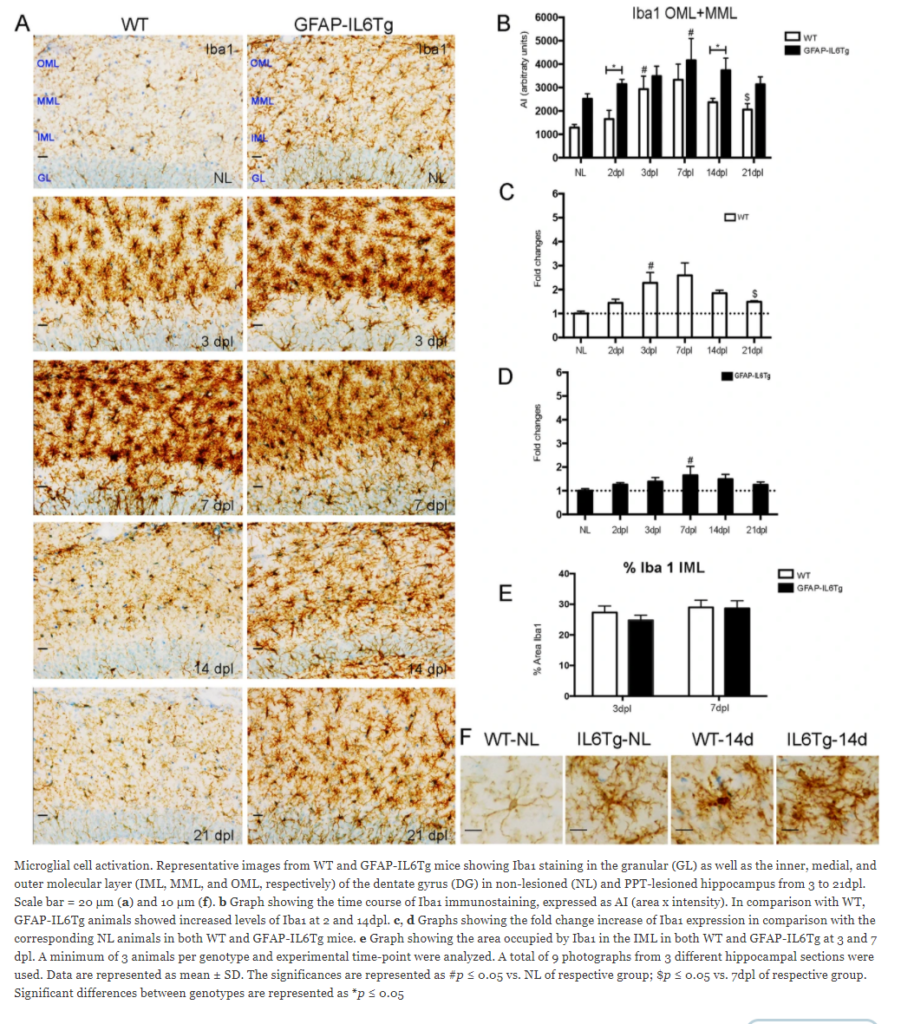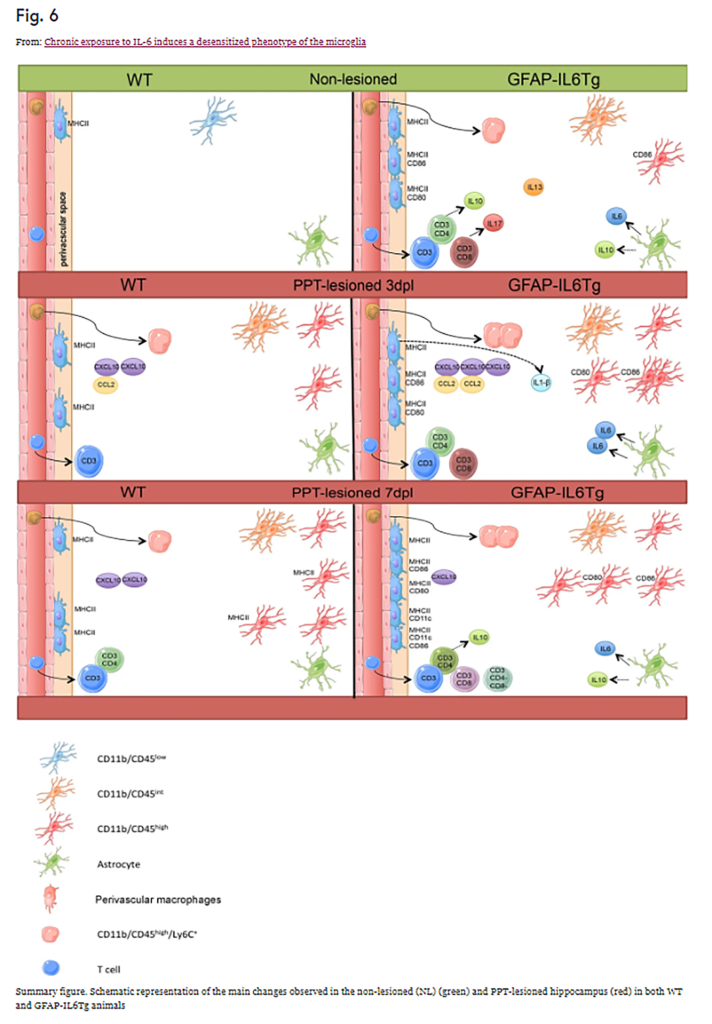Research
Published: 22 January 2021
Chronic exposure to IL-6 induces a desensitized phenotype of the microglia (IL-6への慢性暴露はミクログリアの脱感作表現型を誘発する)
Mireia Recasens, Beatriz Almolda, Jeús Pérez-Clausell, Iain L. Campbell, Berta González & Bernardo Castellano
Journal of Neuroinflammation volume 18, Article number: 31 (2021)
Journal of Neuroinflammationは、神経系の免疫反応をテーマとする査読付きのオープンアクセス(OA)ジャーナルである。 2004年に設立、BioMedCentralによって発行されている。編集長は、スーT.グリフィンとモニカJ.カーソンである(2021年2月現在)。
Abstract
Background
When the homeostasis of the central nervous system (CNS) is altered, microglial cells become activated displaying a wide range of phenotypes that depend on the specific site, the nature of the activator, and particularly the microenvironment generated by the lesion. Cytokines are important signals involved in the modulation of the molecular microenvironment and hence play a pivotal role in orchestrating microglial activation. Among them, interleukin-6 (IL-6) is a pleiotropic cytokine described in a wide range of pathological conditions as a potent inducer and modulator of microglial activation, but with contradictory results regarding its detrimental or beneficial functions. The objective of the present study was to evaluate the effects of chronic IL-6 production on the immune response associated with CNS-axonal anterograde degeneration.
Methods
The perforant pathway transection (PPT) paradigm was used in transgenic mice with astrocyte-targeted IL6-production (GFAP-IL6Tg). At 2, 3, 7, 14, and 21 days post-lesion, the hippocampal areas were processed for immunohistochemistry, flow cytometry, and protein microarray.
Results
An increase in the microglia/macrophage density was observed in GFAP-IL6Tg animals in non-lesion conditions and at later time-points after PPT, associated with higher microglial proliferation and a major monocyte/macrophage cell infiltration. Besides, in homeostasis, GFAP-IL6Tg showed an environment usually linked with an innate immune response, with more perivascular CD11b+/CD45high/MHCII+/CD86+ macrophages, higher T cell infiltration, and higher IL-10, IL-13, IL-17, and IL-6 production. After PPT, WT animals show a change in microglia phenotype expressing MHCII and co-stimulatory molecules, whereas transgenic mice lack this shift. This lack of response in the GFAP-IL6Tg was associated with lower axonal sprouting.
Conclusions
Chronic exposure to IL-6 induces a desensitized phenotype of the microglia.
要約
中枢神経系(CNS)の恒常性が変化すると、ミクログリア細胞は活性化され、特定の部位、活性化因子の性質、および特に病変によって生じた微小環境に依存した幅広い表現型を表示するようになる。サイトカインは分子微小環境の調節に関与する重要なシグナルであり、それゆえにミクログリアの活性化を調整する上で極めて重要な役割を果たしている。その中でもインターロイキン-6(IL-6)は多能性サイトカインであり、様々な病態において微小グリア活性化の強力な誘導・調節因子として報告されているが、その傷害性・有益な機能について相反する結果が得られている。本研究の目的は、慢性的なIL-6産生が中枢神経系軸索性前向性変性症(CNS-axonal anterograde degeneration)に伴う免疫応答に及ぼす影響を評価することである。
アストロサイト特異的にIL6を過剰産生(GFAP-IL6Tg)するトランスジェニックマウスにおいて、Perforant pathway transection(PPT;貫通線維の切断)パラダイムを適用した。海馬組織を2日後、3日後、7日後、14日後、21日後に採取し、免疫組織化学、フローサイトメトリー、タンパクマイクロアレイを行った。
GFAP-IL6Tgマウスでは、非病変時およびPPT後の時点でミクログリア/マクロファージ密度の増加が観察され、より高いミクログリア増殖および主要な単球/マクロファージ細胞浸潤が起きていた。さらに、ホメオスタシスにおいては、GFAP-IL6Tgマウスは、血管周囲CD11b+/CD45high/MHCII+/CD86+マクロファージの増加、T細胞浸潤の増加、IL-10、IL-13、IL-17、IL-6産生の増加など、通常は自然免疫応答と関連した環境を示した。PPT後、野生型マウスはMHCIIおよび共刺激分子を発現するミクログリアの表現型に変化を示すが、本Tgマウスではこの変化を欠いている。GFAP-IL6Tgマウスでのこの応答の欠如は、軸索の発芽の低下と関連していた。すなわちIL-6への慢性暴露はミクログリアの脱感作表現型を誘導する。

